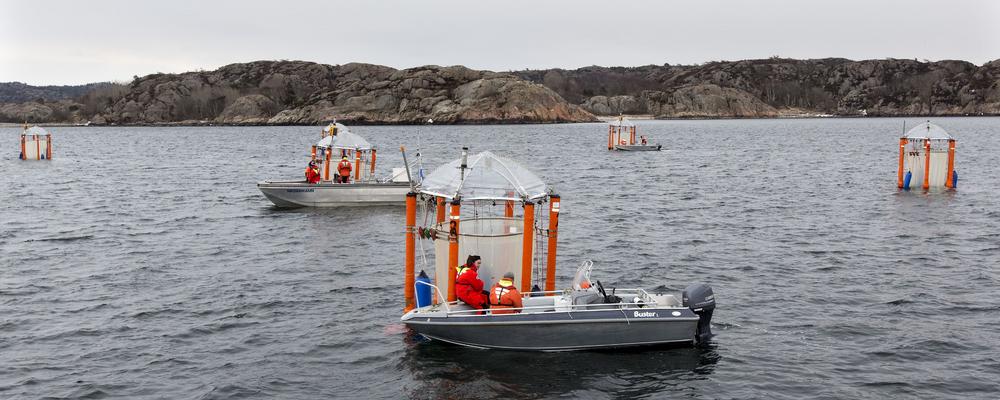
Climate change and the marine environment
Our research focuses on a better understanding of eutrophication, deoxygenation, and other anthropogenic inputs in relation to climate change. We use mathematical models, field observations, and experimental studies. Our research focuses chiefly on the sea areas around Europe and in the Polar Regions.
Changes affect our oceans
Ongoing climate change affects the marine environment in several ways: warming; reduced ice extent; rising water levels; changes in run-off from land; acidification resulting from an increased uptake of carbon dioxide from the atmosphere. How will these changes affect our oceans in both the shorter and longer term? And how will they affect the marine systems?
Providing answers to these questions will require input from several scientific disciplines and studies of the sea as a system.
Models to understand acidification
We are developing chemical models to understand how acidification and other changes will affect ocean chemistry, and our experimental work is based on field studies of the carbon, nitrogen, phosphorus and silicon cycles, the production of halocarbons, and the exchange of chemical substances between sediments and sea water. We have a long tradition of developing methods of analysis, which focus today on the ability of sensors to perform high-resolution measurements in time and space. Sensors are then deployed on buoys and underwater vehicles, and on permanent marine observatories.
Physical processes in the ocean
We are studying physical processes which are not described sufficiently well in mathematical models today, such as the modification of water bodies by turbulent mixing; interaction with complex topography; and exchange mechanisms between sea and atmosphere, sea and sea bottom, and sea and ice.
We use the sediments in the sea as an environmental archive, which reflect the way climate and environments have changed over time, although the sediments also enable us to study ongoing processes. Sediment cores can provide us with answers on how saline content, temperature and oxygen supply have varied over time, and also pollutants, nutrients, flora and fauna.
Genetic adaptations
We are studying the way the species in the ecosystem are affected by climate and environmental change such as ocean acidification by conducting laboratory experiments where organisms are exposed to the levels of pH, temperature and salinity anticipated in the future. Advanced DNA analysis allows us to map the genetic properties of populations which have already adapted to extreme environments (such as the Baltic), and map the speed with which such adaptation can take place through evolution.